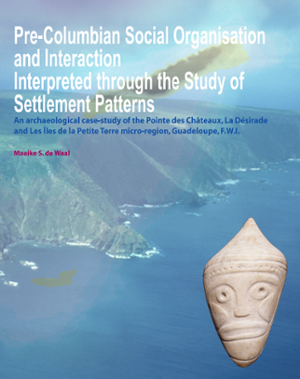Dissertation
Pre-Columbian social organisation and interaction interpreted through the study of settlement patterns
An archaeological case-study of the Pointe des Châteaux, La Désirade and Les Îles de la Petite Terre micro-region, Guadeloupe, F.W.I.
- Author
- Maaike S. de Waal
- Date
- 01 January 2006
- Links
- The publication in Open Access

The archaeological study, investigating pre-Columbian social organisation and interaction on Pointe des Châteaux, La Désirade and Petite Terre (Guadeloupe, F.W.I.), is based on an intensive, systematic inventory through surface observations for the complete research area instead of using excavation data from settlements only, as is common in Caribbean archaeology.
This resulted in an extended site catalogue and insight in the local occupation history until the arrival of Europeans. The earliest occupational evidence dates from AD 400. People lived in coastal settlements and ate tubers, (shell)fish, land animals, birds, fruits and seeds. The food economy hardly changed hereafter.
Long distance contacts, reaching the South-American mainland, existed. After AD 600/850 the number of villages increased and special locations for ceremonial and other activities were established. Many villages were coastal, some were inland. One village assumed a central role.
Long distance contacts (reaching the mainland and the Greater Antilles) continued to exist. Intensive short distance contacts first appear.
From AD 1200/1300 population decreased, probably as result of developing complex societies on the Greater Antilles. People lived on high elevations. Long distance contacts and local networks continued to exist.
After the end of the 15th century, the research area was no longer inhabited by Amerindians.
